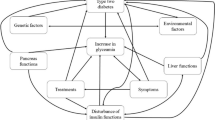Abstract
It is important that designers of hypertext do not assume that the way information is presented in traditional media such as paper books will necessarily be effective in hypertext. Several studies have shown that graphics presented with text on a screen are not necessarily used effectively, or even used at all. In our study, we explored three ways of presenting textual and graphical information about geographical locations and objects. In all cases, the user had to point with a mouse to a item name in order to see text, and the text appeared near the mouse cursor. In one presentation style, no graphic was present. In a second style, a graphic was present, but the text appeared as a caption. In the hypertext style, the user pointed to item names on the graphic. The results showed that the hypertext style resulted in about 20% better learning of both spatial information (which was illustrated by the graphic) and of information not illustrated by the graphic.
Preview
Unable to display preview. Download preview PDF.
Similar content being viewed by others
References
Glenberg, A. M. and Kruley, P. Pictures and anaphora: Evidence for independent processes, Memory & Cognition, 1992, 20 (5), 461–471.
Instone, K., Leventhal, L. M., Teasley, B. M., Farhat, J. and Rohlman, D. S. What do I want? and How do I get there?: Performance and navigation in information retrieval tasks with hypertext documents, Proceedings of the East-West International Conference on Human-Computer Interaction (St. Petersburg, Russia, August 4–8, 1992), 85–95.
Instone, K., Teasley, B., and Leventhal, L. M. Empirically-based re-design of a hypertext encyclopedia, INTERCHI '93 Proceedings, 1993, 500–506.
Leventhal, L. M., Teasley, B. M., Instone, K., Rohlman, D. S. and Farhat, J. (1993) Sleuthing in HyperHolmes: Using hypertext vs. a book to answer questions, Behaviour and Information Technology, 12, 1993.
Mynatt, B. T., Leventhal, L. M., Instone, K., Farhat, J. and Rohlman, D. S. Hypertext or book: Which is better for answering questions?, CHI '92 Proceedings, 1992, 19–25.
Nielsen, J. Hypertext and Hypermedia. New York: Academic Press, 1990.
Waddill, P. J. and McDaniel, M. A. Pictorial enhancement of text memory: Limitations imposed by picture type and comprehension skill. Memory & Cognition, 20 (5), 1992, 472–482.
Wright, P., Hull, A. and Black, D. Integrating diagrams and text. The Technical Writing Teacher, 17 (3), 1990, 244–254.
Author information
Authors and Affiliations
Editor information
Rights and permissions
Copyright information
© 1993 Springer-Verlag Berlin Heidelberg
About this paper
Cite this paper
Instone, K., Brown, E., Leventhal, L., Teasley, B. (1993). The challenge of effectively integrating graphics into hypertext. In: Bass, L.J., Gornostaev, J., Unger, C. (eds) Human-Computer Interaction. EWHCI 1993. Lecture Notes in Computer Science, vol 753. Springer, Berlin, Heidelberg. https://doi.org/10.1007/3-540-57433-6_58
Download citation
DOI: https://doi.org/10.1007/3-540-57433-6_58
Published:
Publisher Name: Springer, Berlin, Heidelberg
Print ISBN: 978-3-540-57433-0
Online ISBN: 978-3-540-48152-2
eBook Packages: Springer Book Archive




